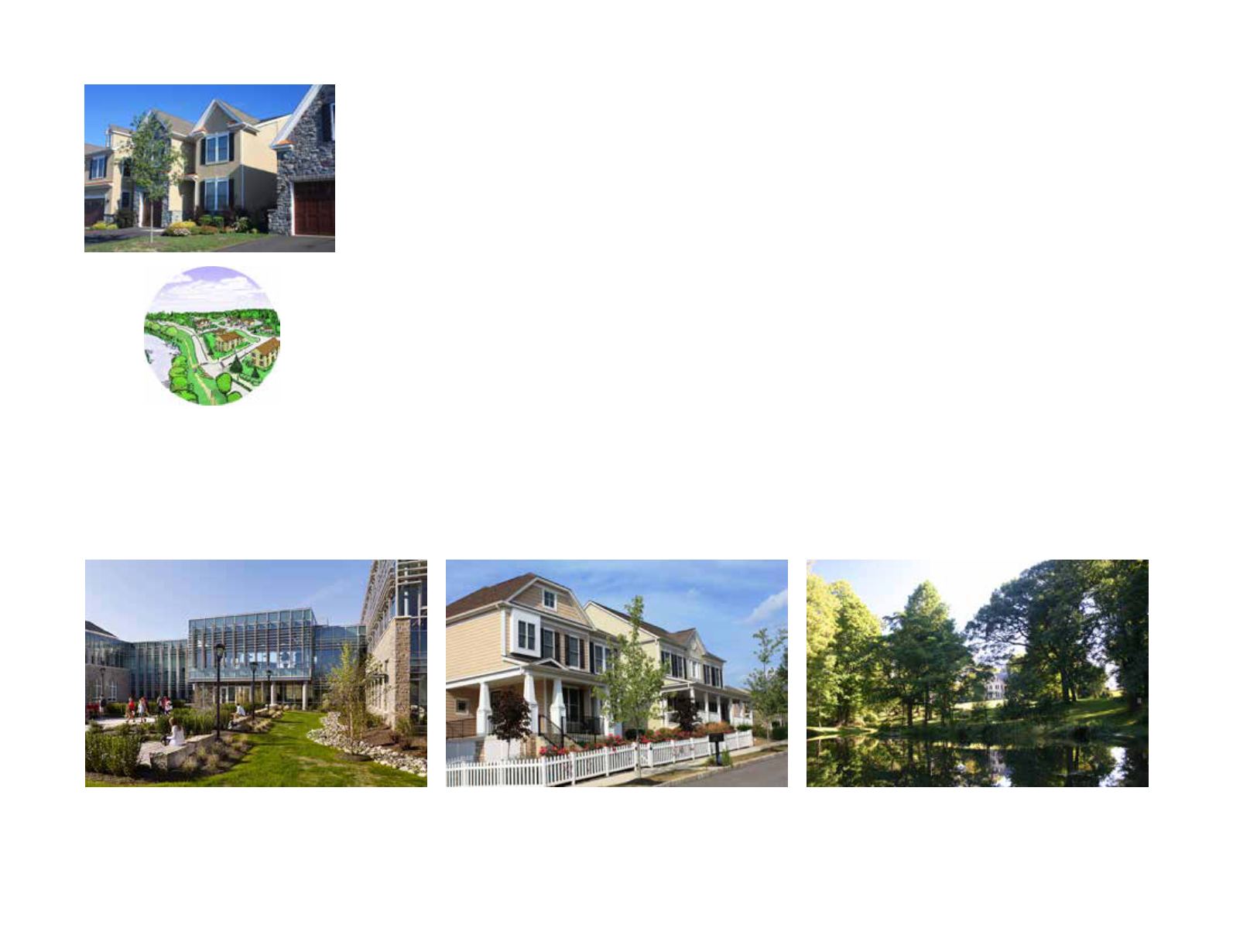
Montco 2040:
a shared vision
87
Suburban Residential Area
– Suburban Residential Areas are residential areas which depend on automobiles for
transportation and often have extensive landscaping on individual properties. These areas will have a variety of housing types,
with single-family detached homes the most prominent type.
Denser and more compact development should occur in Suburban Residential Areas that are next to centers with significant
non-residential development or near train stations. Less dense development should occur near Rural Resource Areas and near
environmentally-sensitive land.
The primary uses in these areas might include:
Single-family detached homes
Less dense multi-family and single-family attached uses
Institutional uses
Secondary uses might include limited small-scale supporting retail and office uses as a transition to busy roads or other uses.
Residential development should match the character and type of housing found in the immediate neighborhood. Trees,
steep slopes, wetlands, and other sensitive land should be preserved, potentially as open space within a cluster development.
Appropriate landscaping, buffers, and street trees should be provided by all developments. Recreation facilities and central
open space should be provided.
Non-residential buildings should have a residential character, with pitched roofs, small building footprints, residential building
materials, and residentially-scaled windows and doors. These uses must also be designed to limit potential impacts of traffic,
noise, and light.
Institutional uses in residential areas must fit into the
local neighborhood with significant landscaping and
sustainable designs.
New suburban homes should be designed as walkable
developments.
Cluster developments preserve important open space,
such as natural features, views, and historic landmarks.


